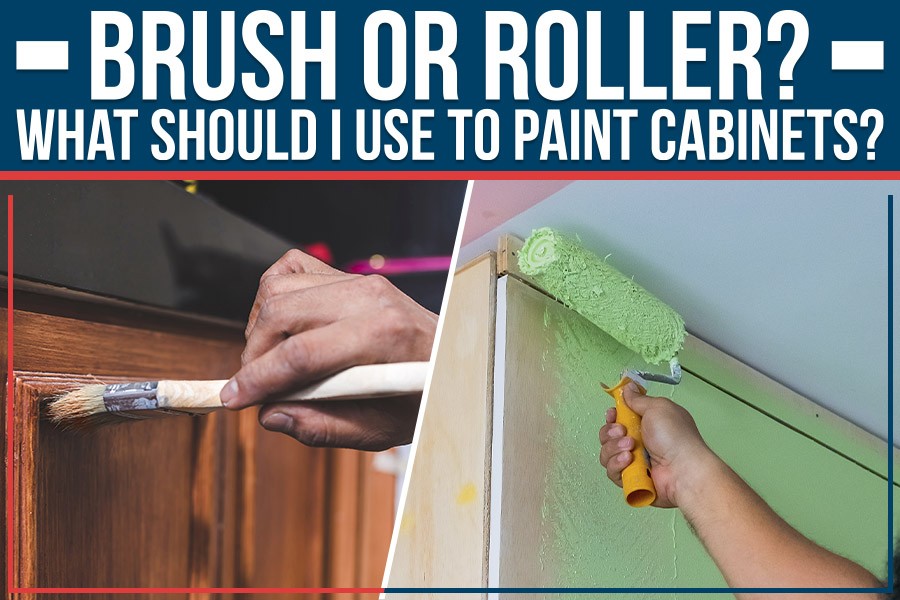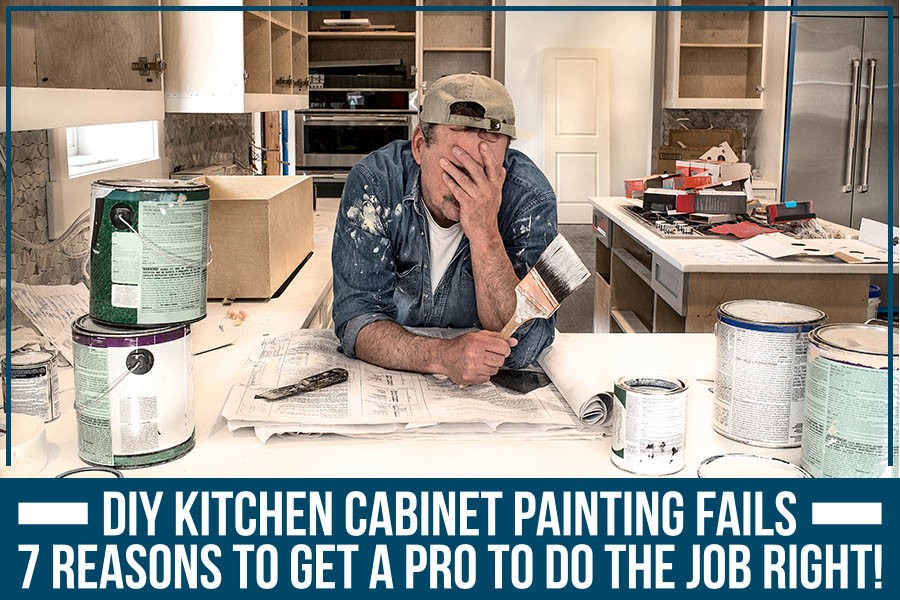Brush Or Roller? What Should I Use To Paint Cabinets?
Painting Kitchen Cabinets? Avoid These Common Mistakes

Table of Contents
Key Takeaways:
Choose the right paint for your cabinets and properly prep them before starting.
Use high-quality brushes and rollers for smooth, even coverage.
Avoid oversaturating the cabinets with paint and allow adequate drying time between coats.
Don’t forget to prime and seal the cabinets.
Caulk around the edges of the cabinets before painting.
Take your time and do it right for a clean, professional finish.
Spray Tex Painting offers residential painting services to customers in Cross Roads, TX, and the surrounding areas.
Painting the cabinets is an excellent way to update the look of your beloved kitchen without spending a lot of money. However, if you don’t do it correctly, you could end up with a mess on your hands.
Spray Tex Painting will discuss the most common mistakes people make when painting kitchen cabinets. We'll also provide tips on how to avoid these mistakes. Let's get started!
The first step is to prepare the cabinets for painting. It involves removing all hardware, cleaning the surfaces of the cabinets, and sanding down any rough spots. Once the cabinets are prepped, you can then begin painting.
When choosing paint for your kitchen cabinets, selecting high-quality paint that will provide a durable finish is crucial. You must choose a color that will look nice with your kitchen décor. If you are confused about the color, you should consult with a professional painter or interior designer.
Also, read our blog on the best finishes for bathroom and kitchen painting.
Once you have selected the paint for your kitchen cabinets, you will need to apply it properly to achieve a professional-looking finish. It is best to use a brush or roller specifically designed for use with latex paint. For a fine finish, you must apply several thin coats of paint rather than one thick skin.
After applying the paint to your kitchen cabinets, you may want to consider adding a clear coat for extra protection. A clear coat is a type of varnish that can help to protect painted surfaces from scratches, stains, and other damage. If you are adding a clear coat, select one compatible with the type of paint you have applied to your cabinets.
After you finish painting your kitchen cabinets, it is essential to let the paint dry completely before replacing any hardware or putting your cabinets back into use. Depending on the paint you used and the temperature and humidity conditions in your home, this could take somewhere between several hours and several days.
Once your kitchen cabinets are painted and dry, you will need to take care of them to keep them looking their best. When cleaning painted cabinets, it is best to use mild soap and water rather than harsh chemicals. Also, don't use abrasive cleaners or scrubbers, which may damage the paint finish.
People often do not clean the cabinets before painting them. Grease, dirt, and other buildup can prevent paint from adhering correctly to the surface, resulting in an uneven finish. To avoid this, thoroughly clean your cabinets with a degreaser before painting.
Another mistake people make is not sanding the cabinets before painting them. Sanding helps to create a smooth surface for the paint to adhere to and also helps to remove any existing paint or varnish on the cabinets. If you do not sand the cabinets, you may end up with an uneven finish.
Using a primer is another critical step many overlook when painting kitchen cabinets. Primer is a barrier between the paint and the cabinet surface, helping to prevent peeling and chipping. Without primer, your paint job is more likely to fail prematurely.

Choosing the wrong type of paint is another common mistake people make. You will want to use a high-quality latex paint that is specifically designed for use on cabinetry. Avoid using oil-based paints as they are more likely to yellow over time and are more challenging to work with.
When painting your cabinets, you should use a brush or roller specifically designed for painting, such as an angled sash brush or a microfiber roller. These brushes and rollers are designed to provide a smooth, even coat of paint and help prevent streaks or brush marks.
People also err in using enough quantity of paint when painting their cabinets. Using sufficient paint to give a nice even coat without any bare spots showing through is essential. When in doubt, always err on using more rather than less paint.
While it is essential to use enough paint, you also do not want to apply too much, as this can lead to drips and runs. Be sure to apply the paint evenly and smoothly without putting it on too thick of a layer.
Another mistake is not letting the paint dry completely before adding new hardware or putting the doors back on the cabinets. Paint needs time to cure properly, so let it dry for at least 24 hours before adding new hardware or putting the doors back on.
Caulking is an essential step in painting kitchen cabinets that many people overlook. Caulking helps to create a seal between the cabinet and the wall, preventing moisture and dirt from getting behind the cabinet and ruining your paint job. Be sure to caulk around your cabinets' edges before painting.
Taping off areas you do not want to be painted is another crucial step in painting kitchen cabinets. Taping off places such as countertops, backsplashes, and floors will help ensure a clean, professional-looking finish. Be sure to use painter's tape rather than regular masking tape, as it will not leave behind any residue.
Learn more about mistakes to avoid while painting kitchen cabinets.
Spray Tex Painting is worth a look if you're in the market for a painting company in * Cross Roads*. Our experienced painters use only the best materials and techniques to ensure that your painting project exceeds your expectations. Plus, we offer a wide range of residential painting services to choose from so that you can get the exact look you want for your home. Contact us today for a free estimate, and let's start **painting your kitchen cabinets ** into something beautiful!
Author

Mason Marquis, raised in Newport Beach, California, and Austin, Texas, amalgamated his experiences from both vibrant cities in his journey. His academic pursuit in Economics and Psychology at the University of North Texas (UNT) led to the founding of Spray Tex Painting. This venture was not just a business for Mason but a practical application of his academic learnings, particularly the integration of economic concepts and psychological understanding. Spray Tex Painting, under Mason's direction, transcends being merely a painting service; it's a platform where client visions are realized through dedication and creativity.
Related Articles

Brush Or Roller? What Should I Use To Paint Cabinets?

Cost to Paint Kitchen Cabinets: Factors That Affect the Price

DIY Kitchen Cabinet Painting Fails - 7 Reasons To Get A Pro To Do The Job Right!

Expert Cabinet Painters Tips for Preparing Your Cabinets for Painting